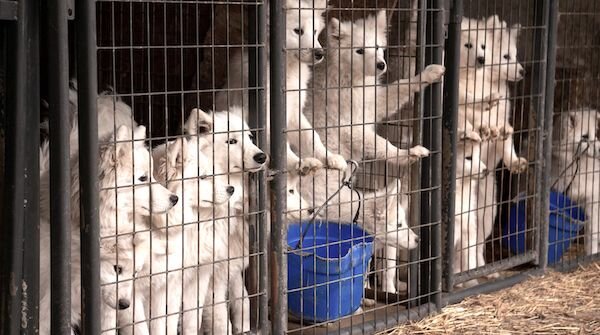Why Unpopular Dog Breeds May Be a Better Choice
©Scott Sheaffer, CDBC, CBCC-KA, CPDT-KA, USA Dog Behavior, LLC
“The most dog-aggressive dog I ever worked with was a French Bulldog.”
There’s not a day that goes by without someone asking me what the best dog breed is. My smart-aleck answer is usually, “whatever breeds of dogs I currently own as my personal pets.” The real answer is not so simple, however. I’m going to challenge you in this short article to think differently about what kind of dog breed you might consider for your next dog.
The AKC (American Kennel Club) is the de facto standard for everything there is to know about dog breeds. They track the popularity of 192 dog breeds on their list of 2018 Most Popular Dog Breeds. The following is the list of their top five breeds.
1) Labrador Retriever
2) German Shepherd
3) Golden Retriever
4) French Bulldog
5) English Bulldog
As a dog behavior consultant, I’ve seen hundreds of troubled dogs of all breeds over the years. The primary issues I’ve helped dog owners with are aggression, separation anxiety, resource guarding, fear and other behavioral problems. After working with so many problematic dogs, I’ve compiled a substantial amount of information on what dog breeds have the most significant and frequently occurring behavior concerns.
I’ve found there’s a correlation between popular breeds and the number and severity of their behavior issues. In short, I’ve observed that popular breeds have a greater frequency and severity of significant aggression, separation anxiety, resource guarding, fear and other behavioral problems versus the more uncommon breeds.
Why is this? It’s complicated, but the simple reason is careless and reckless breeding, think puppy mills. Puppy mills breed dogs that sell the fastest and sell for a lot of money. Because they are going for volume (puppy mills essentially think of these puppies as livestock), they are indiscriminate about which dams (i.e., moms) and sires (i.e., dads) they select for breeding. As a result, genetic behavior problems can be introduced to the litter; unfortunately, genetic behavior issues can be quite difficult to address. It doesn’t help that puppy mills breed the dams too soon and too often. It also doesn’t help that they have no program for the proper socialization of these puppies while they are in their care. Zero.
Not only are genetic behavior issues passed along by high volume puppy mills, but there are a host of physical issues passed on by careless breeding too. About the only thing puppy mill breeders consider when it comes to selecting which dams and sires to breed is physical appearance. Are the puppies going to be cute?
Let’s revisit three of the top five most popular dogs as determined by the AKC.
German Shepherd. This may be the poster dog for behavior (and physical) issues from careless puppy mill breeding. Many of them are human and/or dog reactive and many have fear issues. While Rin Tin Tin was a great TV series, it boosted people’s awareness of this breed to the point that puppy mills have really done their damage over the years. For more information please see, German Shepherds are the Second Most Popular Dog in America. Why do you Rarely See Them in Public? And for the record, I’ve had three German Shepherds as my personal dogs and consider this breed as one of my favorites despite the inherent behavior and physical problems.
French Bulldog. Aren’t “Frenchies” just the cutest things ever? Apparently, a lot of people must think so too because puppy mills are raising these dogs at an alarming rate. This should not be surprising since they are able to sell these puppies for thousands of dollars each. As cute as they may be, I’m seeing a disturbing amount of them with significant dog and human aggression issues. The most dog-aggressive dog I ever worked with was a French Bulldog. You can thank puppy mills for this.
English Bulldog. Who doesn’t love an English Bulldog? I certainly love them, but too many of them have serious behavioral issues including aggression (both human and dog) and fear issues. Their story is essentially the same as the French Bulldog mentioned above. Like with French Bulldogs, puppy mills have seized on an opportunity to sell these puppies in large volumes for thousands of dollars each.
The two dogs I currently personally own are great examples of: 1) a breed that has been negatively impacted by puppy mills, and, 2) a breed that has escaped their negligence.
Reagan is my nine-year-old Cavalier King Charles Spaniel. This breed is the 18th most popular breed according to the AKC. Unfortunately, he has many of the physical issues puppy mills have introduced into this breed. He has a heart murmur, is completely deaf, and will not live a very long life (even though toy breeds normally live very long lives). Who do we thank for this? Puppy mills.
Luke is my four-year-old Great Pyrenees. The AKC lists the Great Pyrenees as the 66th most popular breed - not in high demand. Guess what? Great Pyrenees live really long lives for such a large breed and rarely have significant behavioral or physical problems. Why is this? Puppy mills aren’t interested in breeding them because they just aren’t very popular.
Bottom Line: Buying a puppy from a legitimate breeder and a breed that is not in the top 20 can go a long way in getting a healthier dog both behaviorally and physically.

